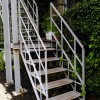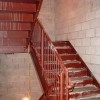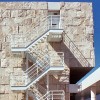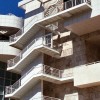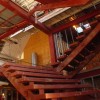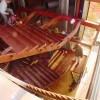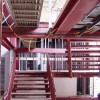Metal Stairs
Metal stairs are an important component of most multi-story buildings and provide a variety of design options. Typical design configurations are straight run, L-shaped, and switch-back. Spiral stair systems fabricated from metal components are also common and offer many design options. A metal stair system can be designed as a multi-story self-supporting structural unit, independent of the building structure, or as a single flight of stairs that is structurally supported at each floor or landing. One of the biggest benefits of a self-supporting stair system is that it can be installed independently of the floor structure. More commonly, stair systems are designed in single flight segments and require structural support through a connection to a floor structure or vertical columns. Metal stair systems are fabricated at a metal shop or facility based on job-specific shop drawings and are delivered to the site in segments to facilitate erection.
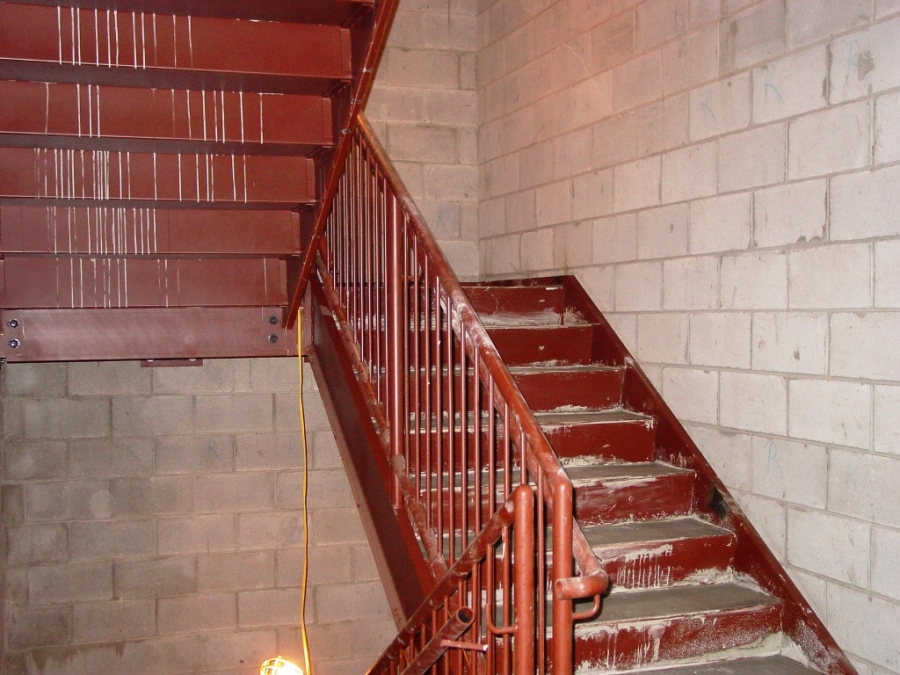
Topic Summary
Metal stairs can be fabricated from steel, stainless steel, cast iron, and aluminum. Other metals, such as bronze, can be used provided that the structural load-bearing capacity is determined by a structural engineer. Stair system components are typically standard sizes and shapes that are customized to fit specific project requirements. The components include the landing frame or floor structure, stringers, treads, risers, brackets, railings, and support columns. Steel stair components are usually prime painted in the shop and receive a final paint coating in the field to prevent oxidation.
Stair systems are an integral part of the building exit and entry and must be designed to achieve the proper fire rating based on building size, occupant load, and use group. Building codes also have detailed requirements for stair systems including structural load, width, riser height, and tread depth. Metal stair systems provide an efficient solution for building code compliance with a greater load capacity and fire resistance than wood. The structural capacity, durability, and ease of erection of metal stair systems provide additional advantages.
Three basic types of stair treads available for metal stair systems are pan, floor plate, or grating. Stair treads constructed with metal grating are typically used for utility stairs or where stairs are exposed to moisture. The grating allows liquids to pass through the stair. The texture of the grating also provides traction. Metal pan treads and floor plates are utilized as formwork where poured-in-place concrete is the desired tread material.

Buildipedia Staff
The Buildipedia research and writing staff consists of dozens of experienced professionals from many sectors of the industry, including architects, designers, contractors, and engineers.
Website: buildipedia.com/


